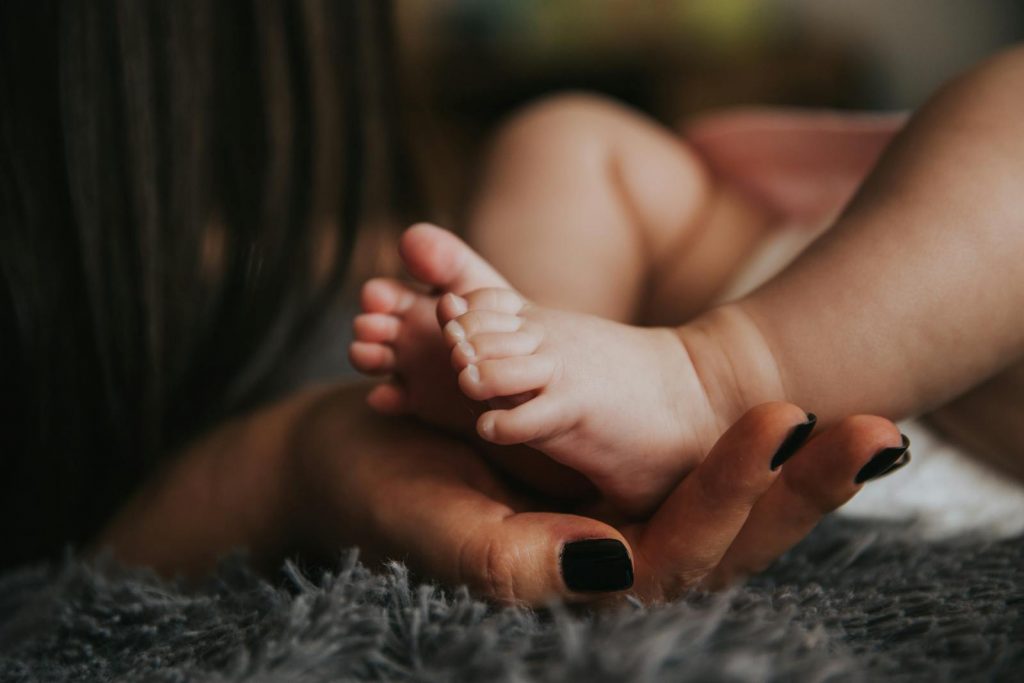Everything Parents Need to Know About Sudden Infant Death Syndrome (SIDS) and How to Prevent It

Sudden Infant Death Syndrome (SIDS) is a deeply tragic event where an otherwise healthy infant dies suddenly and unexpectedly, often during sleep, with no obvious cause after a thorough investigation. SIDS, also known as “crib death,” is the leading cause of death among infants between one month and one year of age in developed countries, including the United States. While research has provided insight into potential risk factors and preventive measures, the exact cause of SIDS remains elusive, making it a condition shrouded in uncertainty and fear for parents.
However, through education and the implementation of safe sleep practices, parents can significantly reduce the risk of SIDS. This guide offers an in-depth look at what parents need to know about SIDS, its risk factors, preventive measures, and how to create a safe sleep environment for their baby.
1. What Is Sudden Infant Death Syndrome (SIDS)?
SIDS refers to the sudden, unexplained death of an infant under one year of age, typically occurring during sleep. What makes SIDS particularly heartbreaking is that it strikes seemingly healthy babies, often during quiet sleep, with no prior warning or symptoms. A diagnosis of SIDS is only made after an exhaustive investigation that includes an autopsy, a review of the infant’s medical history, and an examination of the environment in which the death occurred.
While the precise cause of SIDS remains unknown, it is believed to be linked to a combination of factors, including the infant’s inability to regulate breathing, heart rate, and body temperature. Many experts theorize that SIDS results from a vulnerability in the infant’s brainstem, which controls these essential functions. When faced with stressors such as overheating, an unsafe sleep position, or breathing obstructions, some infants may be unable to wake themselves or respond appropriately, leading to a fatal outcome.
- What Parents Should Know: Despite the unknowns surrounding SIDS, it is important to understand that this condition is not caused by choking, infections, or immunizations. Additionally, SIDS is unpredictable and does not typically present with any clear warning signs. However, by following established safe sleep guidelines, parents can significantly reduce the risk.
2. Common Risk Factors for SIDS
While SIDS can affect any family, certain risk factors have been identified through research. Understanding these factors allows parents to take proactive steps to minimize the risk.
Biological and Environmental Risk Factors:
- Age: The risk of SIDS is highest between 1 and 4 months of age, with most deaths occurring before 6 months. The risk dramatically decreases after an infant’s first birthday.
- Premature Birth and Low Birth Weight: Babies born prematurely or with low birth weight are at a higher risk of SIDS. Premature infants may have underdeveloped brain functions that regulate breathing and arousal during sleep, making them more vulnerable.
- Gender: Male infants are slightly more likely to die from SIDS than female infants, though the reasons for this gender discrepancy are not fully understood.
- Family History: A family history of SIDS or other sudden, unexplained infant deaths may slightly increase the risk.
- Maternal Health: Mothers who are younger than 20, have inadequate prenatal care, or engage in smoking, drug use, or excessive alcohol consumption during pregnancy are more likely to have babies at risk for SIDS.
Sleep-Related Risk Factors:
- Sleeping Position: Babies who are placed on their stomachs or sides to sleep have a higher risk of SIDS than those who sleep on their backs. The “back to sleep” recommendation is the most critical preventive measure parents can take.
- Sleep Environment: A cluttered sleep environment with soft bedding, loose blankets, pillows, or stuffed animals can increase the risk of suffocation and SIDS. Overheating due to excessive clothing, heavy blankets, or a warm room temperature also heightens the risk.
- Co-Sleeping: Bed-sharing or sleeping with the baby on a couch or armchair is associated with a higher risk of SIDS, especially if the parent is a smoker, consumes alcohol, or is overtired.
- Secondhand Smoke: Babies exposed to secondhand smoke, both during pregnancy and after birth, are at greater risk of SIDS due to impaired lung development and respiratory function.
3. How to Reduce the Risk of SIDS
Although the precise cause of SIDS remains unknown, there are well-established strategies parents can implement to significantly reduce their baby’s risk. The American Academy of Pediatrics (AAP) has developed a comprehensive set of safe sleep guidelines aimed at preventing SIDS and other sleep-related deaths.
Safe Sleep Practices:
- Always Place Baby on Their Back to Sleep: The most important preventive measure is to always place your baby on their back for sleep, whether it’s for naps or nighttime. This position helps keep the baby’s airway open and reduces the risk of suffocation. Side and stomach sleeping positions are associated with a much higher risk of SIDS.
- Why It’s Critical: Babies who sleep on their backs are better able to maintain unobstructed airways and regulate their breathing. Placing a baby on their stomach can lead to rebreathing of exhaled air, which may reduce oxygen levels and increase carbon dioxide, leading to fatal outcomes in vulnerable infants.
- Use a Firm Sleep Surface: Babies should sleep on a firm mattress covered with a fitted sheet, free from soft objects or loose bedding. Cribs, bassinets, and play yards should meet current safety standards and have a firm, flat mattress. Avoid placing the baby on soft surfaces like sofas, armchairs, or adult beds, which increase the risk of suffocation or accidental entrapment.
- Why It’s Critical: A firm sleep surface ensures that the baby’s face does not sink into the bedding, reducing the risk of suffocation. Soft mattresses, blankets, or pillows can obstruct the baby’s airway if the baby’s face becomes pressed against them.
- Keep the Crib Bare: The crib should be free of pillows, stuffed animals, crib bumpers, and loose blankets. If warmth is a concern, use a wearable blanket or sleep sack rather than loose blankets that could cover the baby’s face.
- Why It’s Critical: Loose bedding and soft objects in the crib can pose a suffocation hazard. Even well-meaning additions like crib bumpers, which some parents believe provide comfort, are associated with an increased risk of SIDS and are no longer recommended.
- Avoid Overheating: Dress your baby in light sleepwear and maintain a room temperature that feels comfortable for a lightly clothed adult. Overheating can increase the risk of SIDS, so avoid bundling the baby in too many layers or using heavy blankets.
- Why It’s Critical: Overheating can affect the baby’s ability to regulate breathing and increase the likelihood of deep sleep from which they may not easily wake if they experience difficulty breathing.
Additional Preventive Measures:
- Room-Share, Don’t Bed-Share: The safest place for a baby to sleep is in the same room as their parents, but in a separate sleep space. The AAP recommends that babies sleep in their parents’ room for at least the first six months, ideally the first year. Room-sharing allows parents to be close to the baby and respond quickly but avoids the risks associated with bed-sharing.
- Why It’s Critical: Bed-sharing increases the risk of suffocation, accidental rolling, and entrapment, especially when the baby is sleeping on soft surfaces like adult mattresses or couches. Room-sharing without bed-sharing reduces the risk of SIDS by up to 50%.
- Pacifiers and SIDS Prevention: Offering a pacifier during naps and bedtime has been shown to reduce the risk of SIDS, though the exact reason is unclear. It may help keep the baby’s airway open or encourage lighter sleep. If breastfeeding, wait until breastfeeding is well-established (around 3-4 weeks) before introducing a pacifier.
- Why It’s Critical: Pacifiers can promote safer sleep patterns by encouraging frequent arousals from deep sleep. However, parents should not force a baby to take a pacifier or reinsert it if the baby spits it out after falling asleep.
- Breastfeeding and SIDS Prevention: Breastfeeding, particularly exclusive breastfeeding for the first six months, has been shown to lower the risk of SIDS. The protective effect may come from the enhanced immune function and better sleep patterns seen in breastfed babies. Even partial breastfeeding for a few months can have a positive impact.
- Why It’s Critical: Breastfeeding has numerous health benefits, including reducing the likelihood of respiratory infections, which are known risk factors for SIDS. It also helps promote lighter sleep, allowing babies to wake more easily when needed.
4. Understanding the Role of Secondhand Smoke
Secondhand smoke is a significant risk factor for SIDS, and exposure both during pregnancy and after birth increases the risk of sudden death in infants. Infants exposed to cigarette smoke may experience compromised lung development, respiratory infections, and decreased arousal responses during sleep—all of which are associated with SIDS.
- Why It’s Critical: Reducing or eliminating your baby’s exposure to smoke can significantly lower the risk of SIDS. It is important to avoid smoking during pregnancy and to keep the home, car, and all environments where the baby spends time completely smoke-free.
5. Tummy Time and SIDS Prevention
While it is essential to place your baby on their back for sleep, supervised “tummy time” during wakeful hours is important for developing strong neck, shoulder, and arm muscles. Tummy time helps prevent the flattening of the back of the head (positional plagiocephaly) that can occur when babies spend too much time lying on their backs. It also supports overall motor development, allowing babies to develop the strength needed to roll over, sit up, and eventually crawl.
Why It’s Critical:
Tummy time helps babies build the necessary strength and motor skills for healthy development while preventing flat head syndrome (positional plagiocephaly). Additionally, it encourages babies to lift and turn their heads, which enhances muscle coordination and control. While back-sleeping is essential to reduce the risk of SIDS, tummy time during wakeful periods complements healthy physical development.
How to Implement Tummy Time:
Start tummy time from day one, even if it’s just a few minutes at a time, and gradually increase the duration as your baby becomes more comfortable. Always supervise your baby during tummy time to ensure safety, and interact with them to make it an enjoyable experience. You can place toys or brightly colored objects in front of them to encourage reaching and head movements.
6. Regular Pediatric Checkups Are Essential
Ensuring regular pediatric visits is another important aspect of reducing the risk of SIDS and maintaining overall infant health. Your baby’s pediatrician will monitor growth and development, address any health concerns, and provide guidance on safe sleep practices. Regular checkups allow healthcare providers to spot potential risk factors early and offer personalized advice to parents.
- Why It’s Critical: Regular well-baby visits help ensure that your baby is developing properly, while also allowing you to ask questions and receive expert guidance on creating a safe environment for your child. Early detection of health issues or developmental concerns can further mitigate risks associated with SIDS.
How to Make the Most of Pediatric Visits:
Keep a list of questions or concerns to discuss with your pediatrician during each visit, particularly about sleep habits, feeding, and safety. If your baby was born prematurely or has health conditions that might elevate the risk of SIDS, work closely with your healthcare provider to develop an individualized plan to minimize these risks.
7. The Importance of Sleep Environment and Monitoring Devices
Creating a safe sleep environment is critical for reducing the risk of SIDS, but many parents wonder whether using home monitoring devices (such as movement or breathing monitors) can further protect their baby. While there is no evidence to suggest that consumer-grade monitors prevent SIDS, they may provide some parents with peace of mind. However, it’s important not to rely solely on these devices and to prioritize known, effective preventive measures such as safe sleep practices.
- Why It’s Critical: Home monitoring devices, while potentially reassuring, are not a substitute for safe sleep practices. The most reliable way to prevent SIDS is to follow the guidelines set forth by the AAP, including back-sleeping, a firm sleep surface, and eliminating soft bedding and toys from the crib.
Creating a Safe Sleep Space:
To reduce the risk of SIDS, always ensure your baby’s sleep environment is free of hazards. The crib or bassinet should meet current safety standards, with a firm mattress and fitted sheet. Avoid using crib bumpers, as they can lead to suffocation or entrapment, and make sure the room temperature is comfortable to prevent overheating. If you’re considering the use of a baby monitor, choose one that meets safety regulations but remember that it should not replace the core safety measures.
8. Addressing Emotional Concerns: Fear of SIDS and Parental Anxiety
The fear of SIDS can cause considerable anxiety for new parents, as the unpredictability of the condition makes it seem uncontrollable. However, by following safe sleep practices and understanding the risk factors, parents can take meaningful steps to reduce the risk. It’s also important to maintain a balance between vigilance and maintaining a healthy, relaxed parenting approach.
If concerns about SIDS are overwhelming or causing excessive stress, seeking support from healthcare providers, parenting groups, or mental health professionals can be beneficial. Many parents find that talking through their fears and learning from others’ experiences helps alleviate anxiety.
- Why It’s Critical: Managing anxiety about SIDS is important for both the parent and baby’s well-being. Excessive worry can lead to sleep deprivation for parents, which can negatively affect their ability to care for their child. Feeling empowered by knowledge and support can ease this anxiety and create a calmer, more reassuring environment for the baby.
Support Resources:
Joining parenting groups or seeking professional counseling can help parents work through their fears. Additionally, learning more about SIDS from reliable sources, such as pediatricians or organizations like the American Academy of Pediatrics (AAP) and First Candle, can provide reassurance. These organizations offer resources to guide parents through the preventive measures that can be taken to protect their infants.
9. Responding to Grief After SIDS
While the focus is on prevention, it’s also important to acknowledge that SIDS, tragically, still happens. If you or someone you know has experienced the loss of a child to SIDS, finding support is crucial. The grief associated with losing a child to SIDS can be overwhelming, and parents may experience feelings of guilt, confusion, and isolation. Grief counseling and support groups for families who have experienced the loss of a child to SIDS can provide a compassionate space for healing.
- Why It’s Critical: The sudden loss of a baby to SIDS is a profoundly traumatic event, and families often need specialized support to navigate their grief. Support groups, counseling, and connecting with other families who have experienced similar losses can help survivors feel less alone in their grief.
Resources for Grieving Families:
Organizations such as the American SIDS Institute and First Candle offer grief support and resources for families who have lost a child to SIDS. Support groups, whether online or in-person, can provide a community where parents can share their stories and begin to heal.
10. Continued Research and Advancements in Understanding SIDS
While we have made significant strides in understanding risk factors and prevention strategies for SIDS, research is ongoing. Medical professionals continue to study the potential biological, genetic, and environmental causes of SIDS, seeking answers that could one day lead to more effective prevention or early detection measures.
One promising area of research is focused on identifying abnormalities in the brainstem that affect an infant’s ability to regulate breathing and arousal during sleep. Other research efforts are exploring genetic markers, immune system responses, and the role of infections in SIDS cases. As the medical community learns more, it is hoped that these advancements will lead to further reductions in SIDS rates worldwide.
- Why It’s Critical: Ongoing research is essential for improving our understanding of SIDS and developing new methods to prevent it. Staying informed about the latest research can help parents make decisions based on the most up-to-date information available.
Staying Informed:
Parents can stay informed by following reputable medical organizations, such as the American Academy of Pediatrics, for updates on the latest SIDS research and recommendations. Being aware of new studies and developments can provide reassurance and contribute to ongoing prevention efforts.
Conclusion
Sudden Infant Death Syndrome (SIDS) is a heart-wrenching and perplexing condition, but with education and preventive measures, the risk can be significantly reduced. Parents play a vital role in creating a safe sleep environment for their infants by following evidence-based guidelines, such as placing babies on their backs to sleep, using a firm and bare sleep surface, avoiding overheating, and eliminating exposure to smoke.
While the fear of SIDS can cause anxiety for many parents, understanding the factors that contribute to the condition—and the steps you can take to prevent it—provides empowerment. Breastfeeding, room-sharing without bed-sharing, and ensuring regular pediatric checkups are all additional protective measures parents can take.
Ultimately, the best defense against SIDS is a combination of knowledge, preparedness, and support. By staying informed and vigilant about safe sleep practices, parents can create a nurturing and secure environment that greatly reduces the risk of SIDS and ensures their baby’s safety and well-being.


